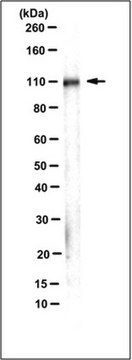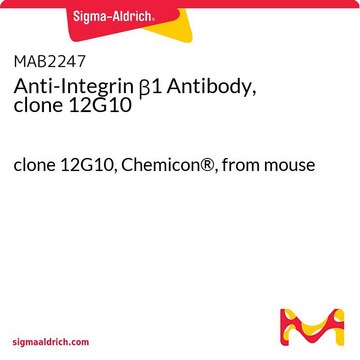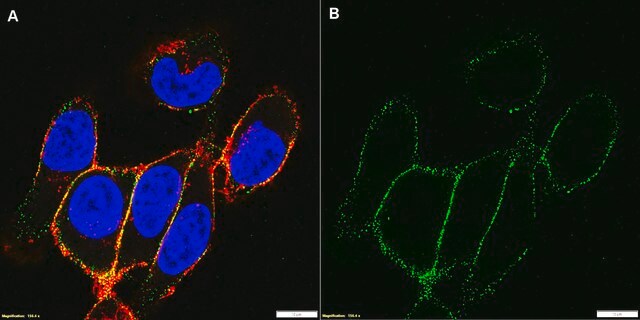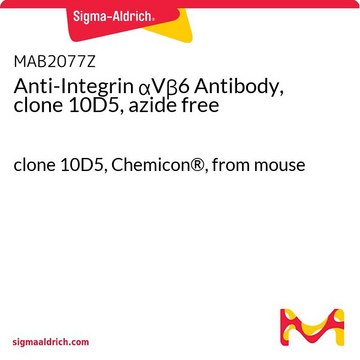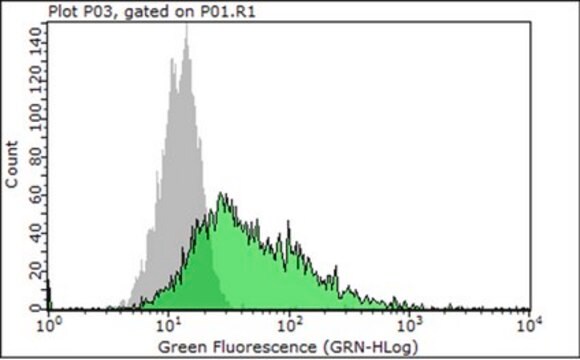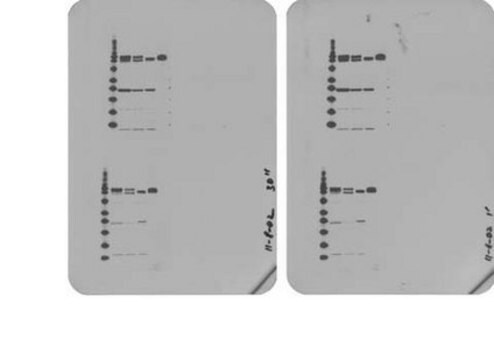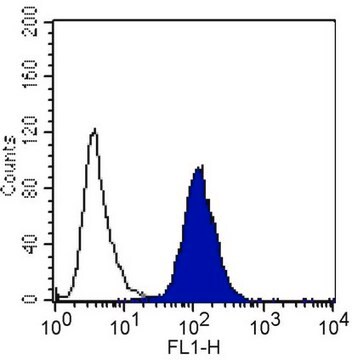MAB1959
Anti-Integrin β1 Antibody, clone P5D2
clone P5D2, Chemicon®, from mouse
Synonym(s):
CD29, MAB1959Z
About This Item
Recommended Products
biological source
mouse
Quality Level
antibody form
purified immunoglobulin
antibody product type
primary antibodies
clone
P5D2, monoclonal
species reactivity
human
manufacturer/tradename
Chemicon®
technique(s)
ELISA: suitable
flow cytometry: suitable
immunocytochemistry: suitable
immunohistochemistry: suitable
immunoprecipitation (IP): suitable
isotype
IgG2bκ
NCBI accession no.
UniProt accession no.
shipped in
wet ice
target post-translational modification
unmodified
Gene Information
human ... ITGB1(3688)
Related Categories
General description
Specificity
Immunogen
Application
Immunohistochemistry: A representative lot of this antibody clone was used in immunohistochemistry (acetone fixation, no paraffin embedding).
ELISA: A representative lot of this antibody was used in ELISA.
Immunocytochemistry: A representative lot of this antibody clone was used in immunocytochemistry (paraformaldehyde fixation at less than 4%).
Functional Activity Assay: A representative lot of this antibody clone was used in cell attachment assay of SV-HFO cells with a characteristic spread morphology. In the presence of function-blocking mAbs to β1 integrin (P5D2), the cells attached but no longer spread, and displayed a rounded morphology with many cytoplasmic projections (Iba, K. et al., 2000).
Cell Structure
Integrins
Quality
4 µg of the antibody was used to detect Integrin β1 in 1x10^6 A431 cells.
4 µg of the antibody was used to detect Integrin β1 in 1x10^6 HeLa cells.
Physical form
Storage and Stability
Analysis Note
Human tonsil, human skin tissue
A431 & HeLa Cells
Other Notes
Legal Information
Disclaimer
Not finding the right product?
Try our Product Selector Tool.
recommended
Storage Class Code
10 - Combustible liquids
WGK
WGK 2
Flash Point(F)
Not applicable
Flash Point(C)
Not applicable
Certificates of Analysis (COA)
Search for Certificates of Analysis (COA) by entering the products Lot/Batch Number. Lot and Batch Numbers can be found on a product’s label following the words ‘Lot’ or ‘Batch’.
Already Own This Product?
Find documentation for the products that you have recently purchased in the Document Library.
Our team of scientists has experience in all areas of research including Life Science, Material Science, Chemical Synthesis, Chromatography, Analytical and many others.
Contact Technical Service